How I Organised Our Sensory Play Supplies (and made playtime a no brainer!)


Louise @inspiremyplay
Part of the @InspireMyPlay team. Sensory play specialist and mum to two boys.
How I Organised Our Sensory Play Supplies (and made playtime a no brainer!)
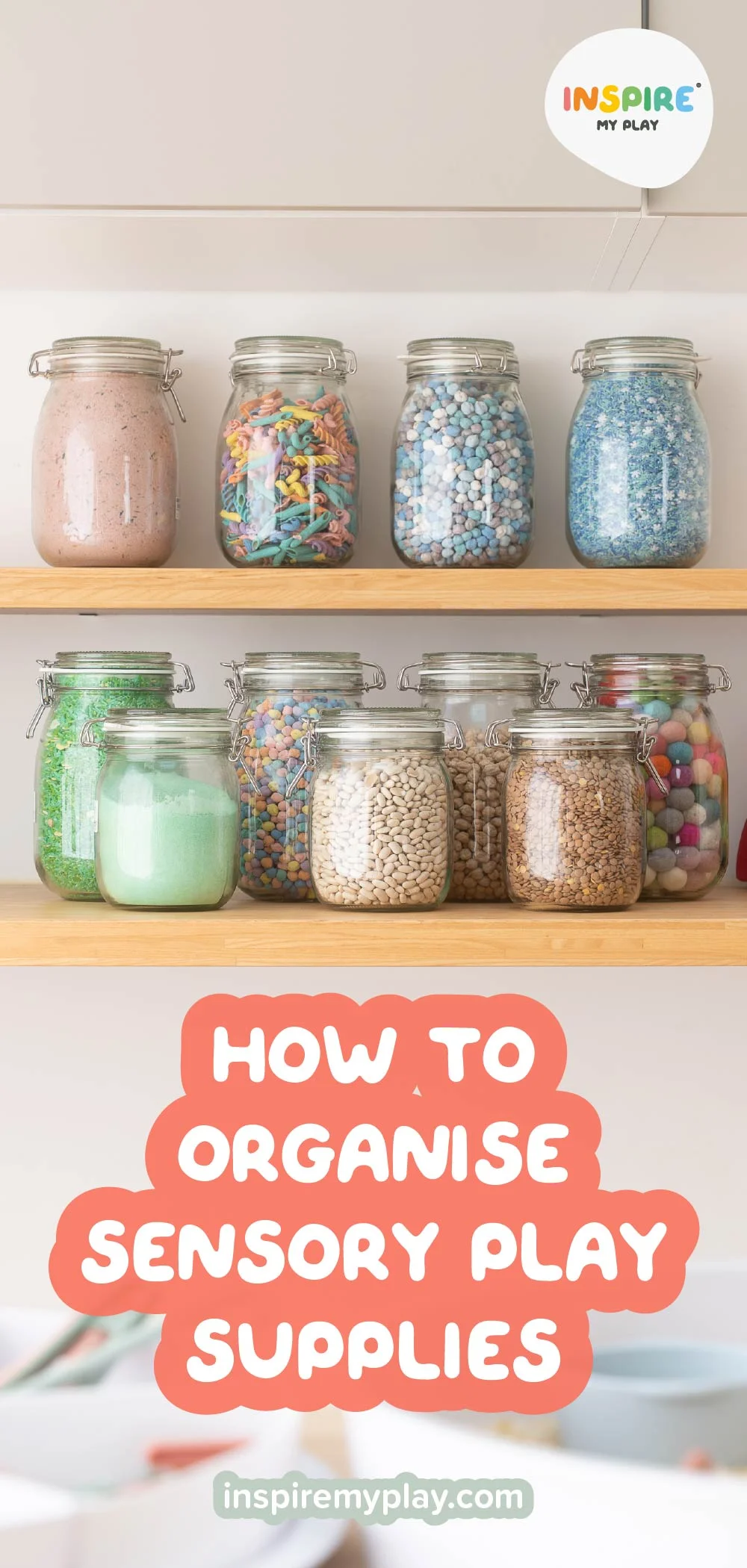
Planning in the moment
Previously I would often say “not right now” when they asked to set up a PlayTRAY activity. I would be weighing up how much time and motivation I had to spare right there and then, taking into account the frustration of rummaging through random tubs, usually failing to find everything we needed, or having to empty an entire cupboard just to find it, often over-buying things I thought we’d run out of, only to find them elsewhere (this has happened more times than I care to mention!).
Once I got our resources sorted and easy to access, it transformed sensory play into something I could set up in minutes, without fuss, making it an easy “yes!”.
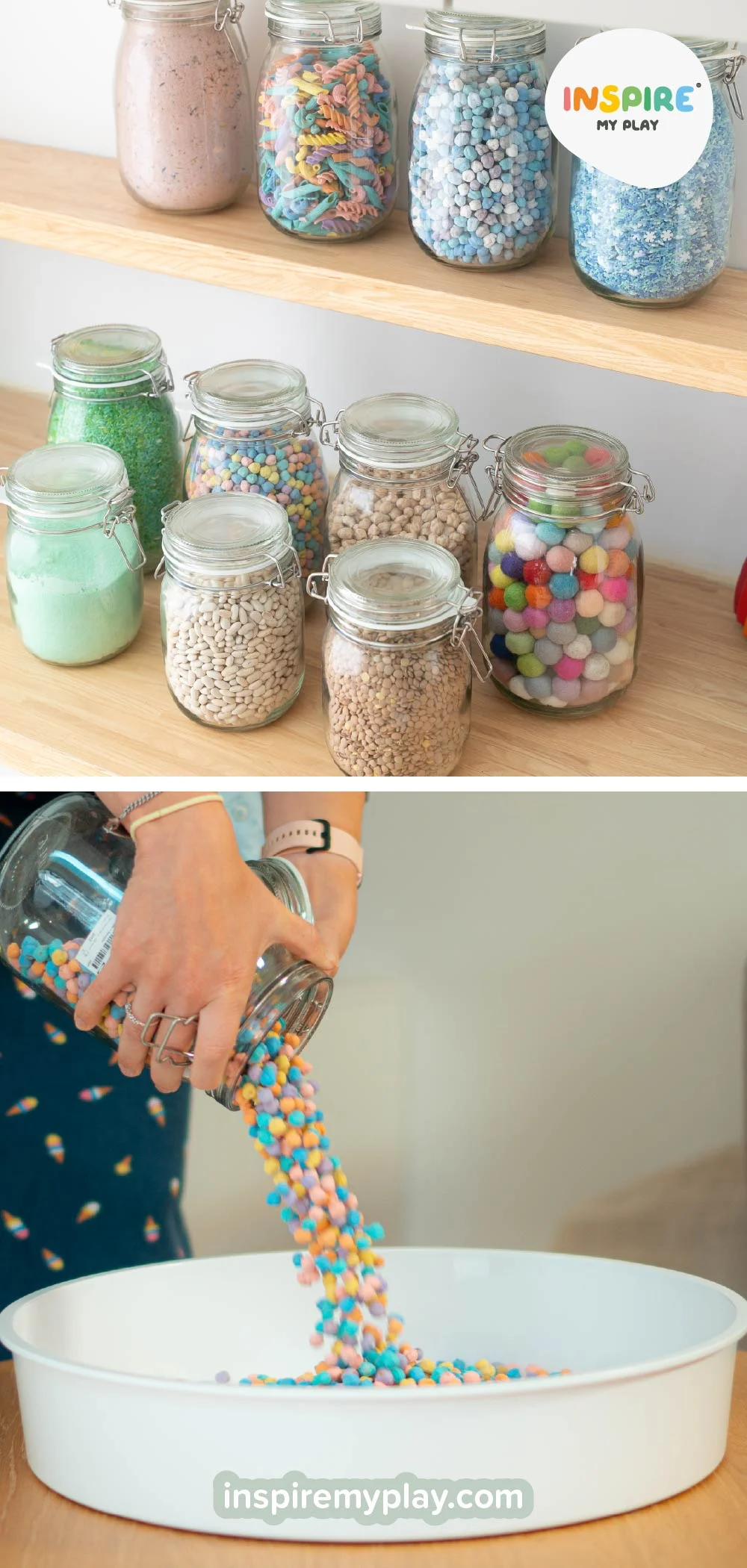
More time to play
Now, instead of sensory play set ups being something that I have to think about when they’re in bed, or being a mammoth job to clear up, these activities have become a quick and easy option for all of us. We can whip up most recipes & themes in minutes and clear it away almost as fast!
Over time a system has evolved around our play that’s practical and easy to maintain, which means sensory play is now a fun experience for all of us—and I enjoy it almost as much as they do! Here's what’s working for us:
1. The Inspire My Play PlayTRAY: Our Sensory Play Hero!
The PlayTRAY is hands-down one of the best investments I’ve made in our play setup and is in almost constant use in our home. It’s incredibly versatile, with a deep tray that can hold a myriad of bases, and materials and enough space for both of my kids (and very often a friend each) to gather together and play. It has a shallow tray that doubles as an airtight lid, and the 6 removable compartments make organising and sharing out components a breeze.
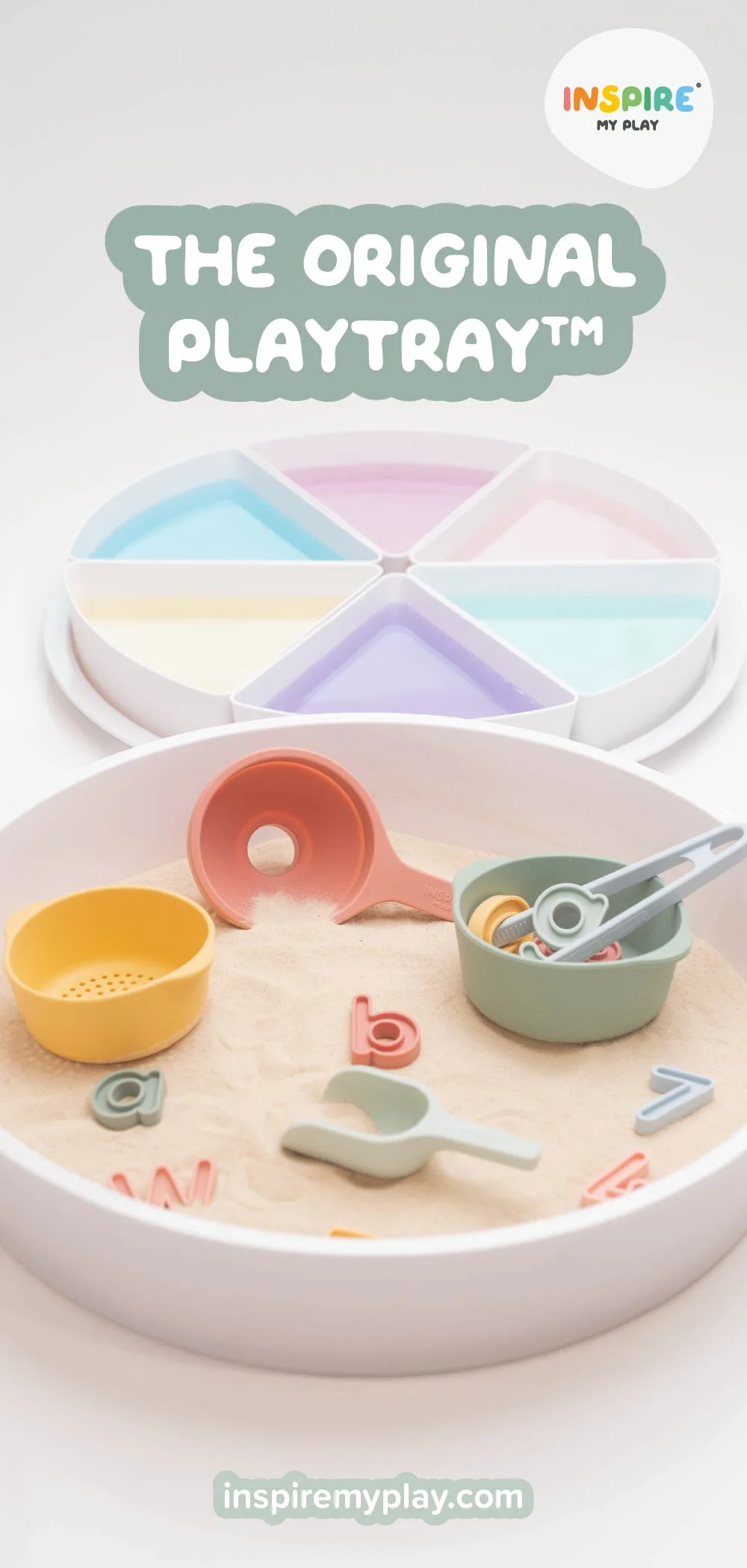
The 6 removable compartments make organising and sharing out components a breeze. During play, the tray is deep enough that materials generally stay inside of it and the compartments help keep materials like rice, sand, or pasta separate, which means less mess and more focus on fun! I’ve noticed that how I present materials to my boys and their friends makes a huge difference in how they play. If everything is tossed together in one big jumble, they tend to dig around not entirely sure where to start, struggle to come up with ideas or lose interest quickly.
But when resources are sorted in a visually organised way, for example bases in one place, tools in another or shared evenly between different zones, themed items in their own section, or laid out in an orderly manner for my youngest — they’re far more likely to experiment and get into a creative zone.
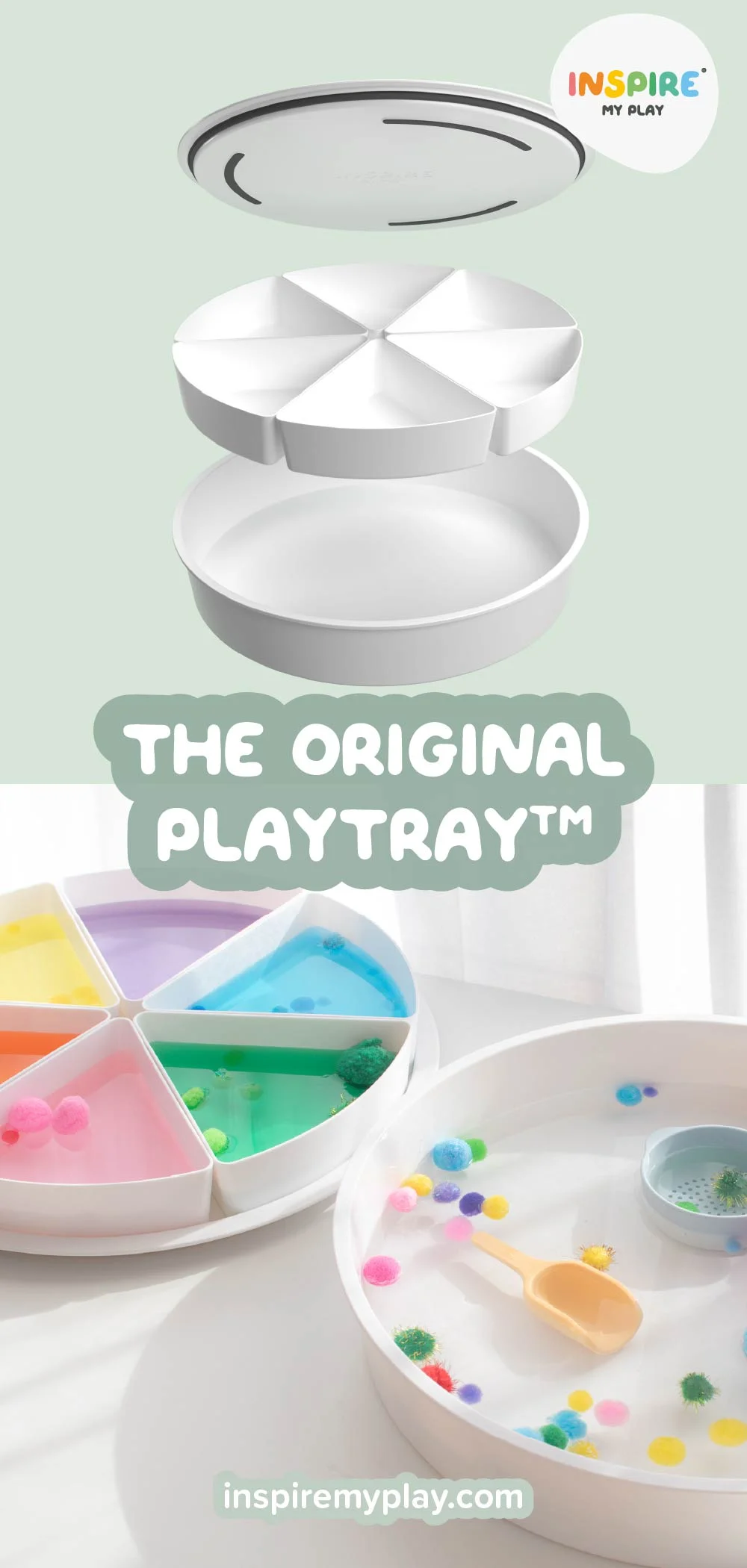
This is one of the reasons the PlayTRAY’s removable segments work so well. Each material has its own space, which makes it easier for them to choose what they need and combine things in imaginative ways. It’s a little bit of structure that actually encourages creativity.
When playtime is over, I can pop the lid on and store everything neatly away to be used again later - or even leave it set up and airtight if we plan to come back to it tomorrow.
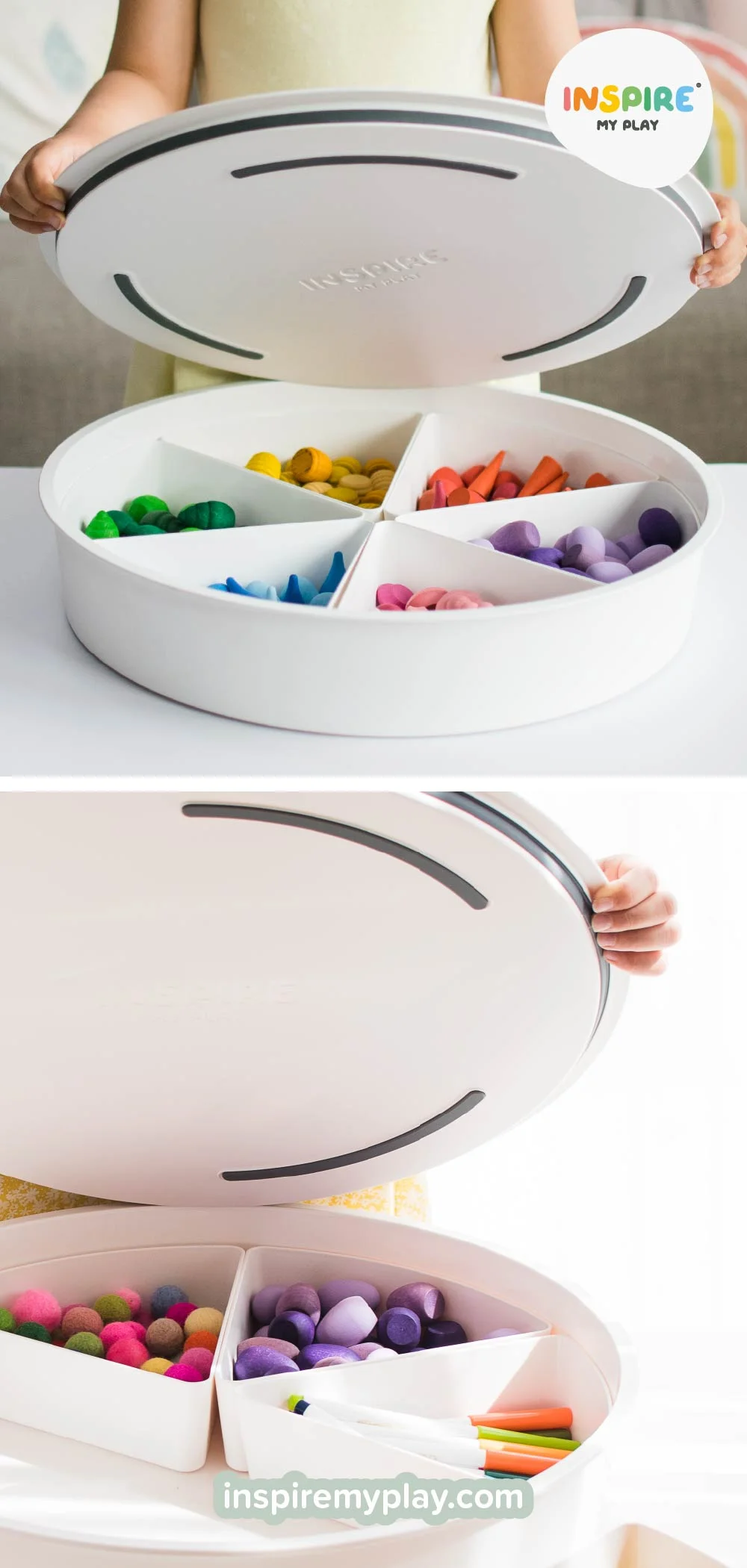
It’s also super handy when we’re heading out for a playdate. Everything travels easily and stays contained! (We’ve used it for playdate picnic snacks as often as we have for playdate activities!) Bonus: when not in use, this is also where I store most of our Inspire My Play tools and accessories too!
2. Silicone Storage Inserts: A Game-Changer for Organisation
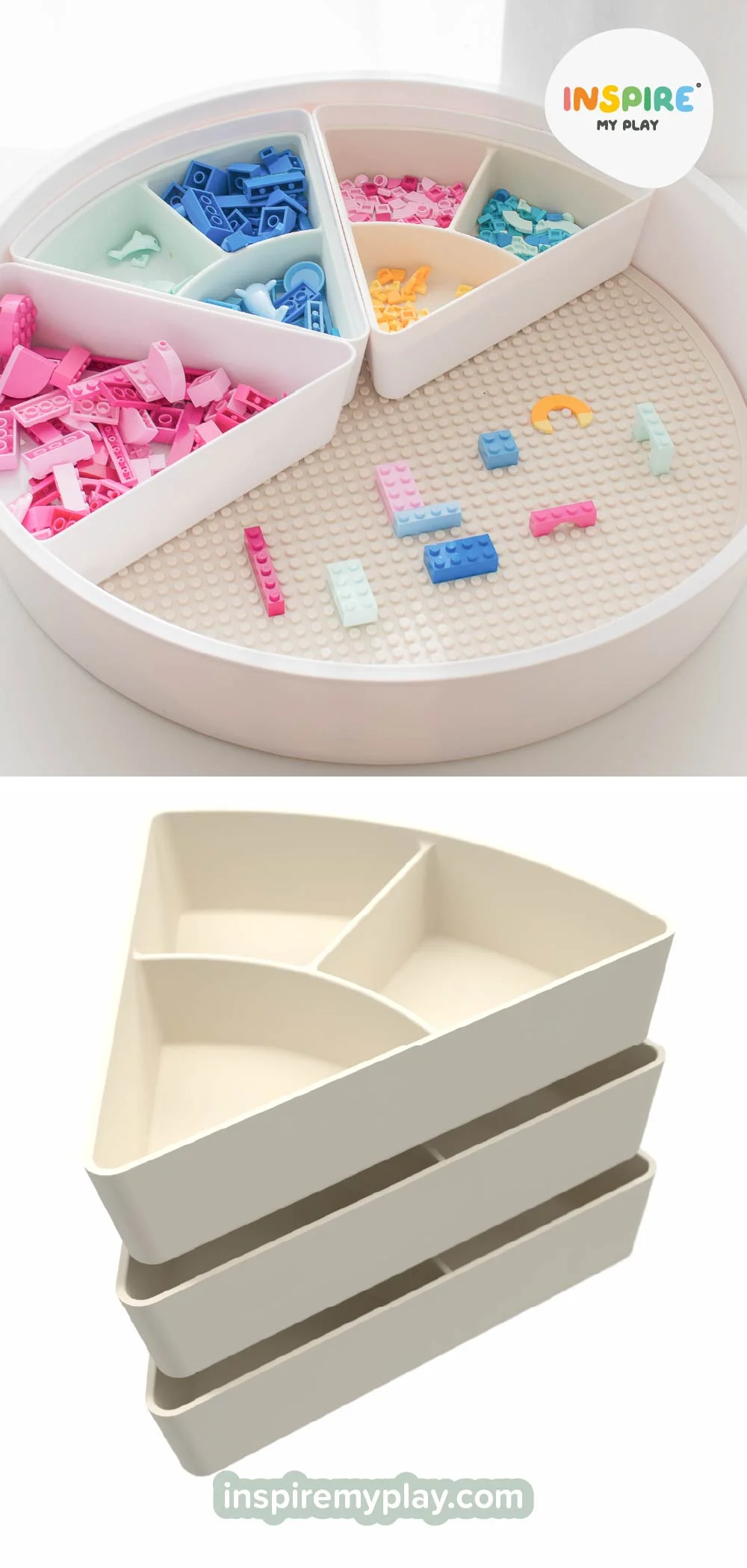
They’re perfect for when we’re using multiple textures or materials in one activity, and cleaning up afterward is so much simpler because everything has its place.
3. Sensory Play Recipe Cards: Inspiration at My Fingertips
We love the Inspire My Play sensory activity cards—they take the guesswork out of playtime. When I’m low on energy or ideas we can just flick through the cards, make our choice and set something up in minutes. I keep them in their little box next to our sensory supplies so they’re always easy to find and the size and rigidity of them means that even my youngest can leaf through them and pick an activity. It means we’re never short of a new idea or variation, and the boys get to try something different in the moment.
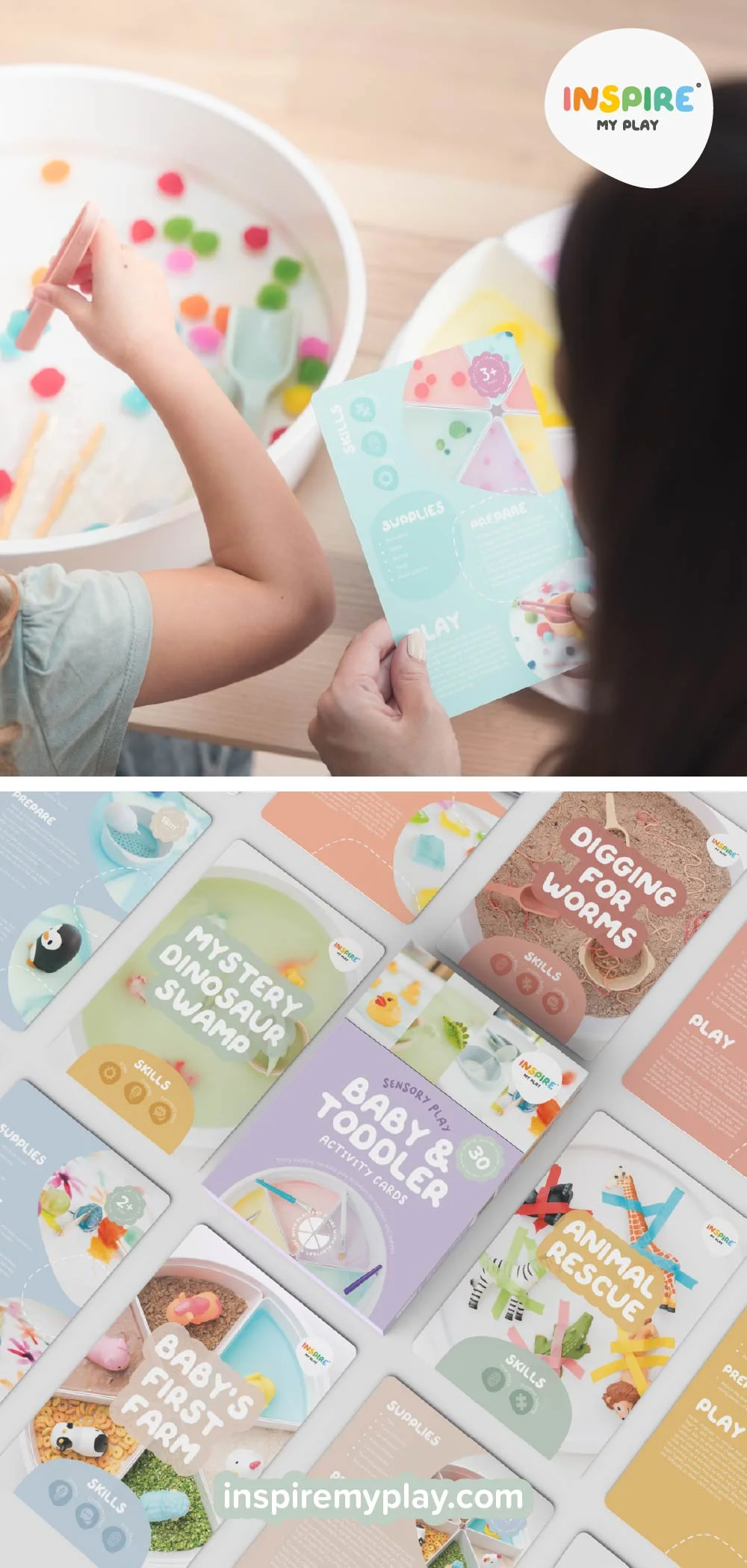
4. Clear Storage Bins with Labels: Simple but Effective
For all the little bits – think mini blocks, mini bricks, letters, dry bases, decorative items - clear airtight containers have been a lifesaver. I used to have all sorts of mismatched coloured tubs employed for storage (sometimes labelled, sometimes not!) and it was such a drag trying to rummage through it all whenever we wanted to play. Switching to clear containers and jars has been a major game changer! The boys have started helping to set-up and even CLEAN UP (honestly!!) because everything has a clear designated home (win!).
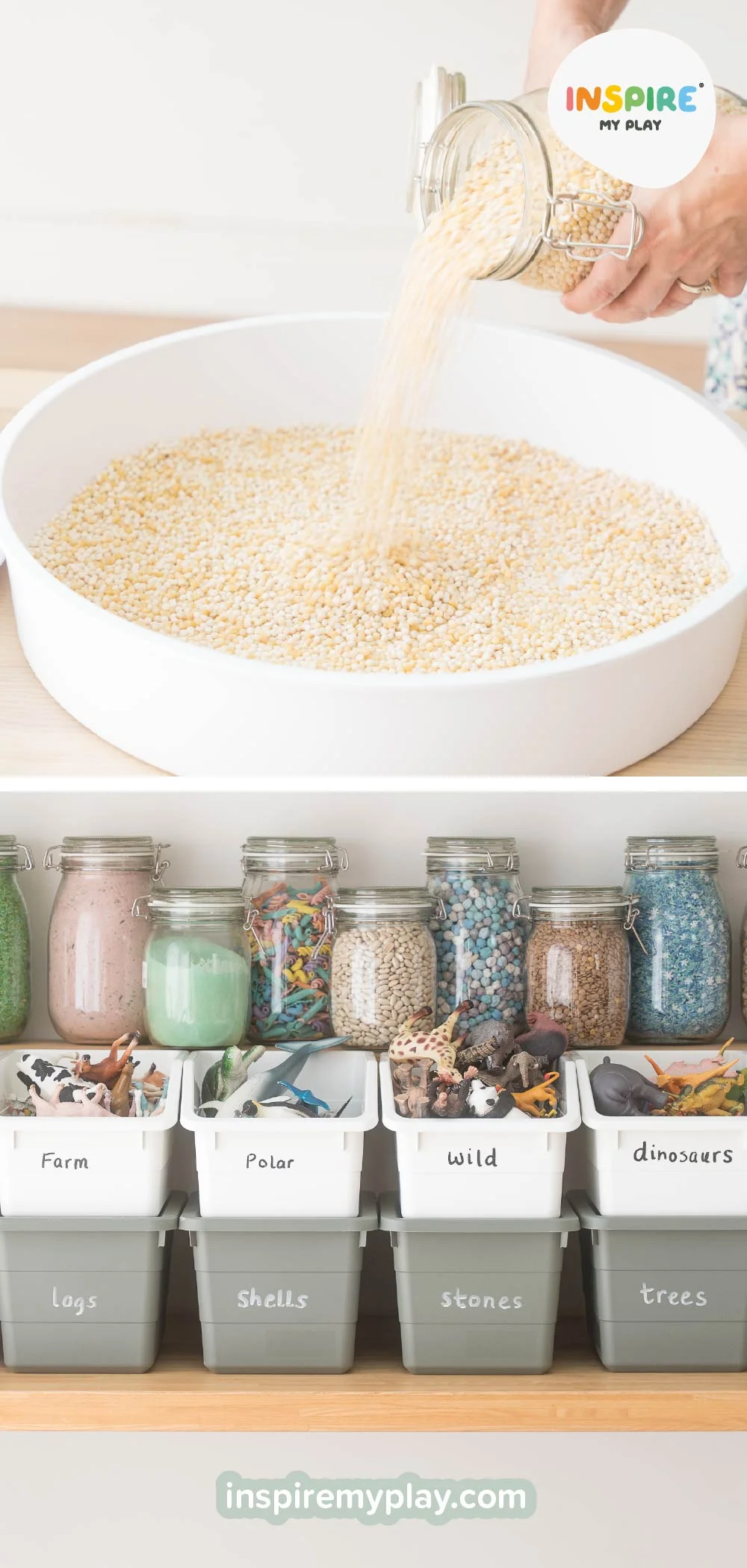
5. Wall-Mounted Storage: Making more of the space we have.
Our house is on the small side, and I don’t have lots of available floor space or spare rooms for storage furniture, so we’ve added some wall-mounted shelves above our unit in the lounge. The unit houses larger items like our PlayTRAY, floor mats, wipe clean tablecloth and other bulky shaped items so they are off the floor and easy to grab, but can be neatly put away out of sight when it’s time to re-set. I’ve also used a few decorative baskets to keep smaller oddly shaped items like vehicles, animals, plastic eggs etc as well as our ever growing stack of printables looking tidy AND easy on the eye – visual aesthetics make a big difference when your playroom is also your living room!
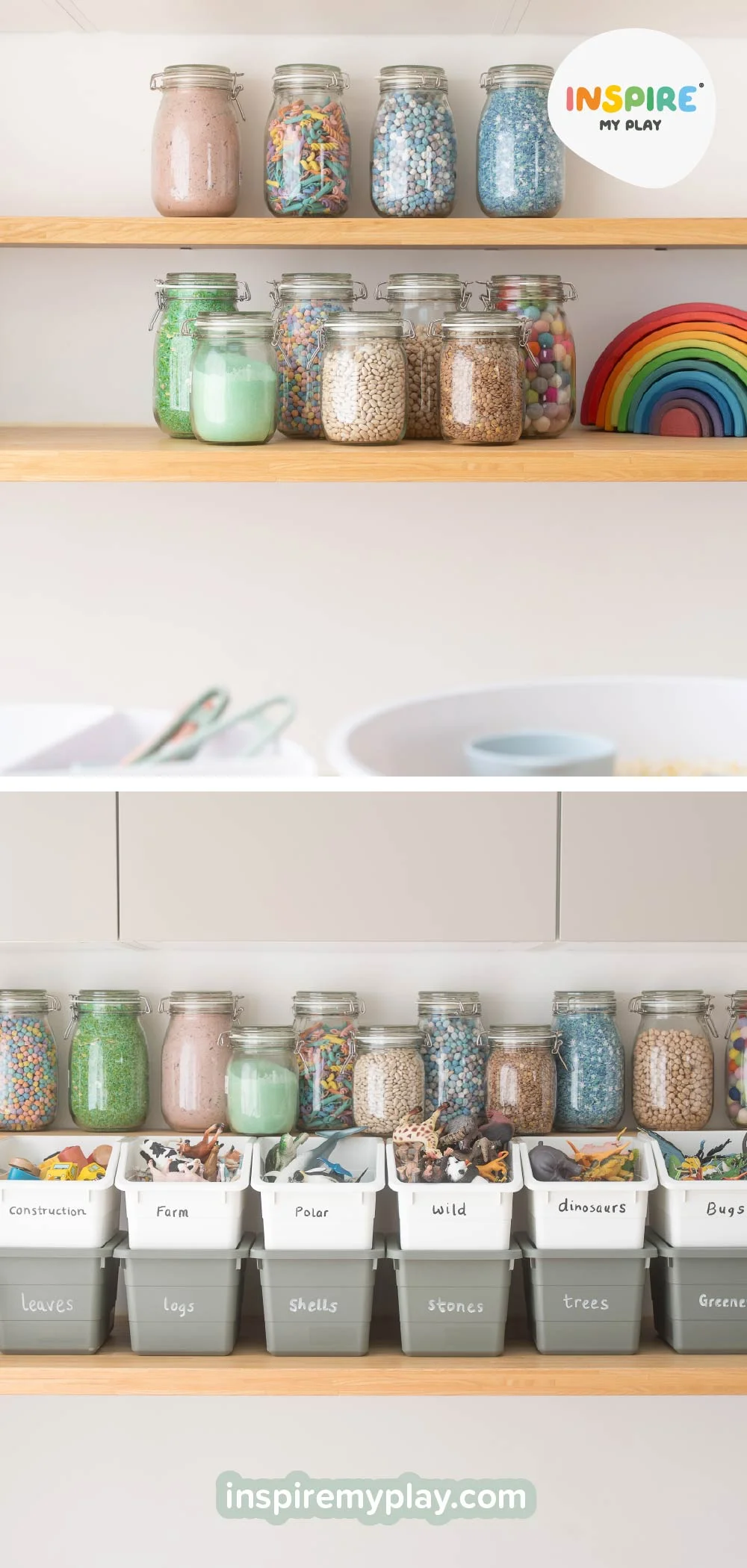
6. Re-purposed Household Containers: Budget-Friendly and Cute
Not everything needs to be purpose-made or require a huge outlay for a bumper set of matching containers. I’ve repurposed old jars, clear lidded boxes, and baskets to store our items that live inside cupboards. If we can see through them and my kids can manage them, they earn a place in our cupboard and I think they add a personal touch to our setup. (I still don’t let my youngest use the glass jars by himself as we have hard flooring downstairs, but at 5 years old, he’s ok with the rest).
Plus, it saves money and reduces waste, which is always a bonus. When I do need to buy a new container I am gradually increasing the number of stackable ones, but only when I don’t have a re-purposed one I can turn to.
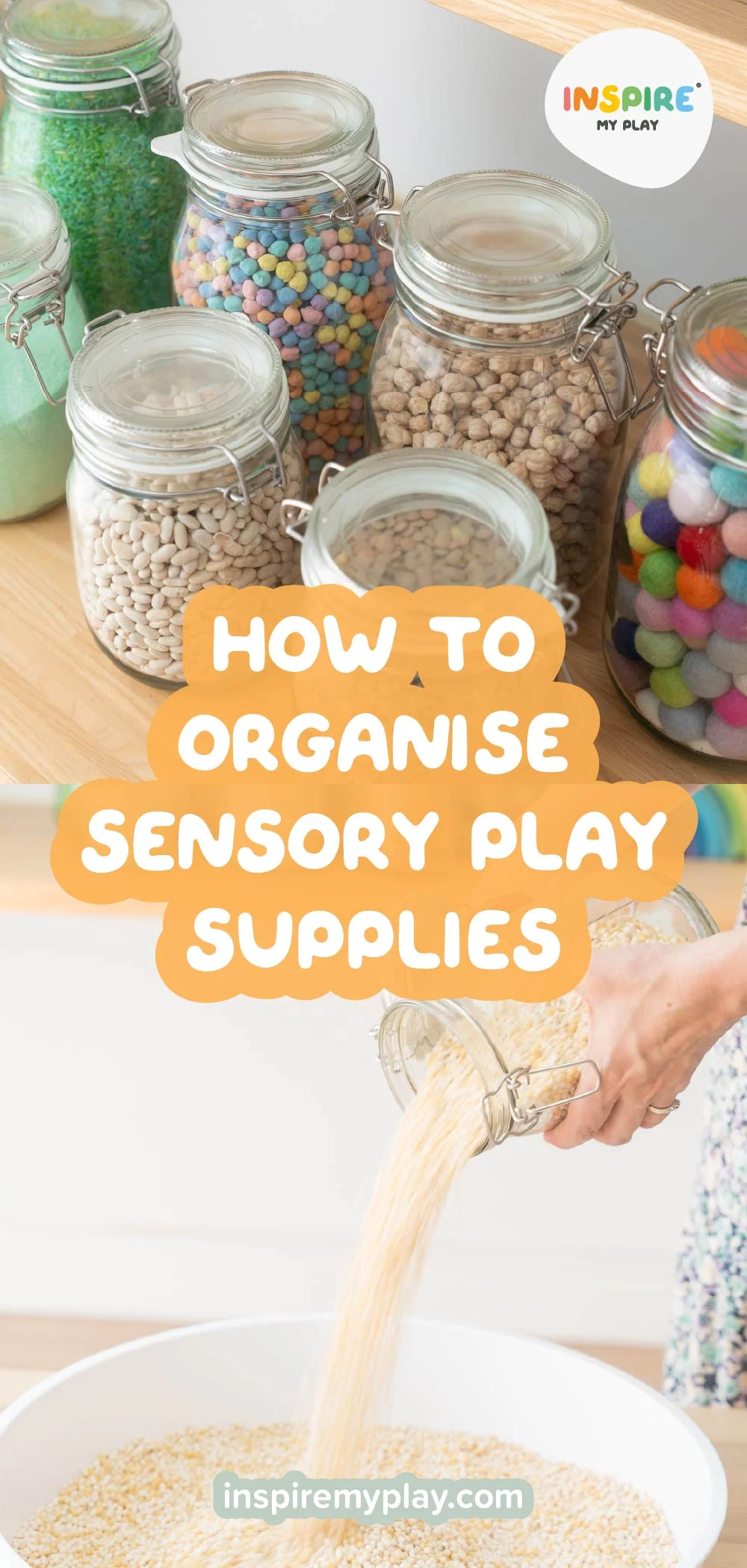
7. When I’ve run out of containers, I’ve happily reached for large Ziploc or A4 size mesh zip-up bags.
They might not win any Pinterest-aesthetic awards, but they save a huge amount of space and make it easy to see exactly what’s inside (we also store most of our board games and puzzles in this way too, it saves so much space!). They’re lightweight, hard wearing, easy to label, and great for keeping similar items together — whether it’s a stash of buttons, a set of small decorative items, or a bag of dyed rice. For items that are in quite small quantities I’ve used the smallest Ikea re-sealable food bags and then popped them all into a larger container together to stop them going walkies.
8. Sensory Play Mats: Roll Up and Ready to Go
We use sensory play mats all the time, and I love that they can be rolled up and stored when not in use. They provide a boundary for messy activities that my children generally stay within because the mats are clean and soft for sitting on, they also make cleanup way easier. Having a dedicated storage spot in the play cupboard for the mats means we can unroll them at a moment’s notice and jump straight into play.
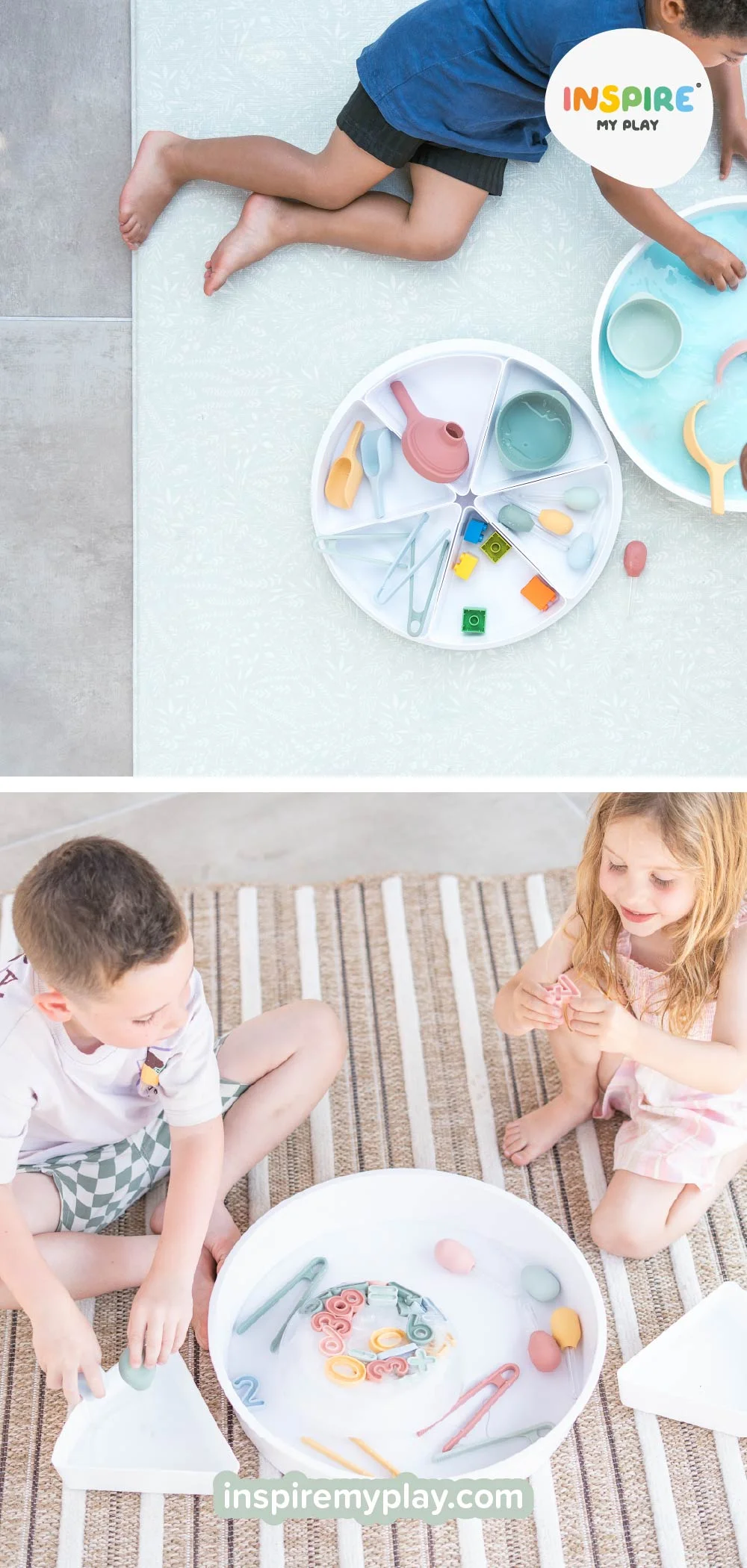
By setting up these simple storage systems—many inspired by the wonderful members of the PlayTRAY Community group on Facebook I’ve created a space that invites spontaneous creativity and exploration without the stress. It’s made a huge difference in how often we play, how much we enjoy it, and even how quickly we can tidy up.
If you’re drowning in resources or just want to make things feel a bit more manageable, I hope these tips help you as much as they’ve helped us!










